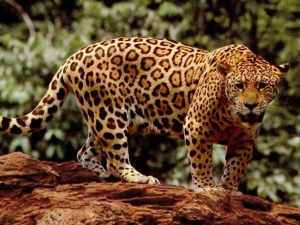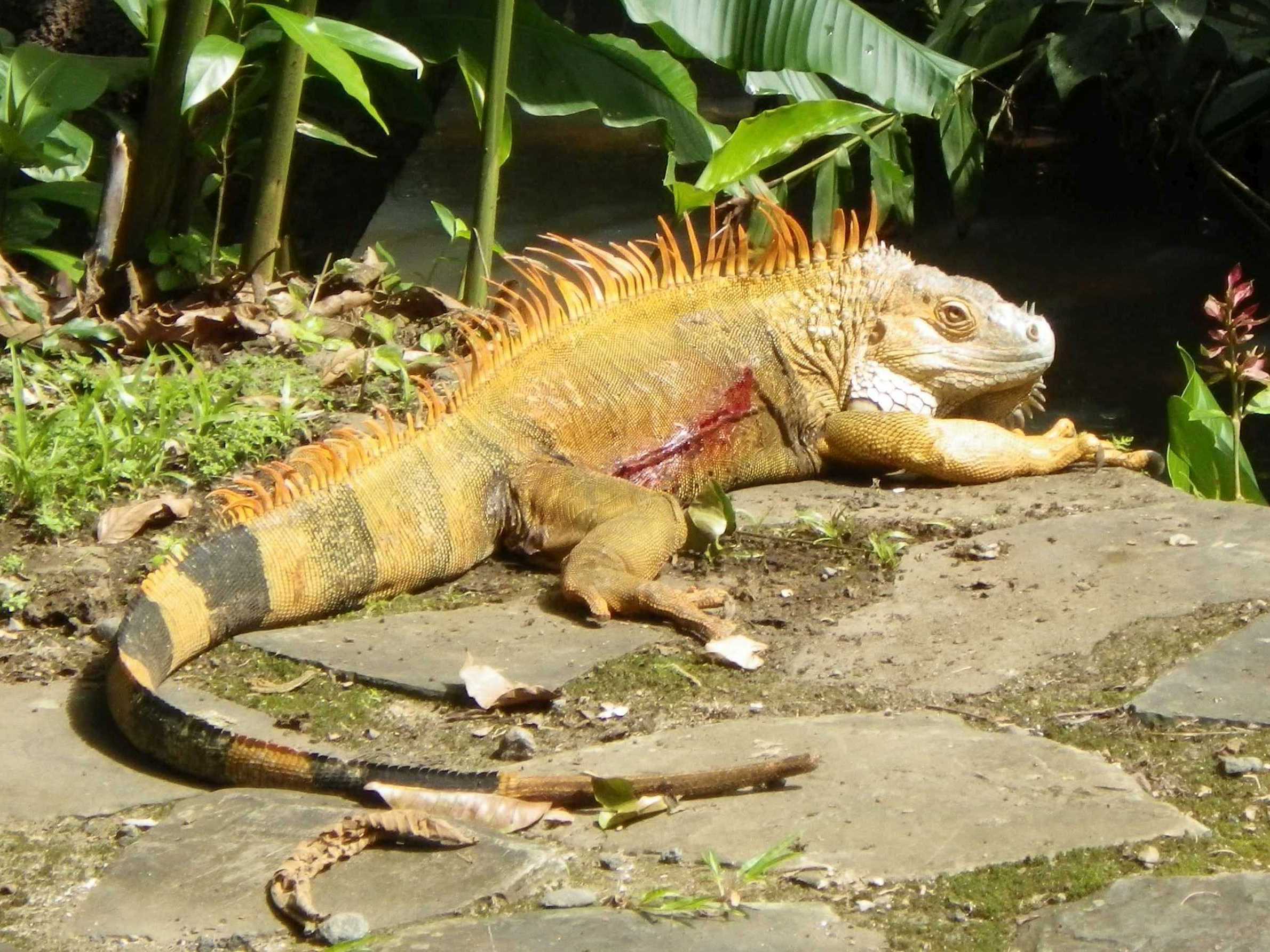It sucks to be an iguana. That’s why they have that look on their faces. If you’re an iguana, everyone just wants to eat you. You’re a gentle vegetarian who wouldn’t harm a fly, but all it buys you is a job as the main protein source for an entire food chain. If you’re an iguana, you’re a talented survivor in three different ecosystems—you’re a terrestrial animal who can become aquatic in a pinch or become arboreal in a different pinch, but it doesn’t do you any good because you’ve got predators in all three places. Even human beings have been eating iguanas and their eggs for over seven thousand years, and call them gallina de palo, chicken of the tree. And now they’re being captured live and imprisoned in peoples’ terrariums. Iguanas don’t get any respect.
And they’re all around us here in Akumal, Mexico, where Susan and I now live, so I thought it was as good a place as any to start transitioning my Ranger Randy articles to the tropical biome. I looked into these large and handsome reptiles.
The green iguana (Iguana iguana, a name worth repeating) is a tremendously successful animal throughout south and central America, and they’re seldom green. Susan and I photographed the one above in Costa Rica. He’d clearly had a close brush—Susan calls him “Not the fastest iguana in the forest.” He’s a male, and the orange tone is breeding coloration. He’s maybe three feet long, but if they live long enough (which only a few do) they can reach five or six feet, and at that point they are well-armored and formidable lizards capable of defending themselves. They have claws, razor-sharp teeth and a dorsal crest of wicked spines that runs all the way down their back, and people who know have told me that you don’t want to get lashed by that tail. Even so, there are predators in these forests who can easily take them down. Just the line-up of cats in American tropical forests can give you the shivers, ranging from the tiny jaguarundi up through the ocelots to the huge and magnificent jaguar. It’s a fearsome place to call home, and it has made the iguanas tough, and good at what they do.

-
Jaguar (Panthera onca)
By USFWS[Public domain], via Wikimedia CommonsThey like to hang out in trees for safety, and to soak up rays (thermal-regulate), and for a little extra margin, they like for the trees to be over water. If you run a river in Central America you can always see them lounging around way up there above your head. They do this so that if they are attacked from the air, they can take a dramatic, flying leap, plunging thirty, forty or fifty feet down into the water to hopefully escape. One nature guide we talked with had seen an iguana do this to escape a harpy eagle, and he hit the water only to be pursued to the far bank by a crocodile. They’ll even take a leap like that with no water around, and can survive a fifty-foot fall to the forest floor, braking themselves by shredding passing foliage with their hind claws as they plummet.
They breed like rabbits, and that’s because they actually occupy a similar ecological niche, being a primary herbivore at the base of the food pyramid. A female will lay up to sixty-five eggs in a burrow, and she doesn’t go in for parental nurturing. She lays the eggs and leaves, and that’s the end of that. The young fend for themselves right out of the eggshell, but they help each other through, staying in a family group for the first year, using the more-eyes-is-better philosophy, or, as scientists call it, the “selfish herd” behavior.
Their range is growing, and not for good reasons. It’s not clear if they were always as far north as Mexico, and they can be considered invasives here depending on who you talk to. But for sure they never belonged in Texas, south Florida or the Hawaiian islands. Puerto Rico wants to eradicate theirs. They have been introduced in all those places as stowaways on produce ships, or as escaped or released pets. They’re darlings of the pet trade right now. Everyone thinks they’re cool, but they’re actually very difficult to care for, and most of them perish within the first year, or—an even worse crime—get released into the wild by their owners, all of which is just one more reason (as if we needed one) not to go around caging wild animals. In 1995, though, an interesting thing happened. They suddenly colonized the Caribbean island of Anguilla, where they had never been before, and a scientist named Ellen Cinsky was able to figure out, with some significant biological and oceanographic investigation, that a raft of trees uprooted by a hurricane and containing a clutch of iguanas had drifted two hundred miles from another island over a period of three weeks, proving that it is not always human beings who mess up ecosystems by introducing species.
They have a “third eye” on the top of their head called a parietal eye, which is a very primitive form of light receptor also found in some amphibians and fishes. It is not capable of forming images but can detect something like the passing shadow of a raptor, and also guides their thermal-regulation. But their thermal-regulation only goes so far. At the end of the day these creatures are cold-blooded (ectothermic) and anything below about seventy-nine degrees farenheit puts them in a stupor, which is what led to the 2008 frozen iguana showers in south Florida. Bear with me. A rare cold front passed through, and the iguanas in the trees became insensible and lost their grip, and were falling out of the sky all over the place. The sidewalks and bike trails were littered with them. Later in the day when it warmed up most of them were able to stumble off and resume their lives.
Now you know.
Copyright © 2014 Randy Fry

